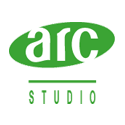Article for the Domov magazine 2/2015, author: Vít Straňák
What is the recipe? Should we pretend, in the spirit of the exact sciences, that something does not exist? “In my project I focus on the development of positive mood,” reads the recipe of Oldřich Hozman. “I have observed that when a person is in positive mood, geopathic zone have no impact on them.” An architect attempts to develop positive mood in projects, e.g. by using the method of collective creation or different artistic methods that promote self-actualization and inner self-expression of a man. They seek to enable all parties cooperating to find themselves and to be able to artistically express themselves. “People are then deeply satisfied and fulfilled. They enjoy the creation and the fact that the project has incorporated their wishes. They are strengthened in their self, become healthier and not affected by groundwater. ”

Shaping the architecture of Waldorf Schools (Part 2)
/in Articles and ReportsHouse as a Poppy Flower
/in Articles and ReportsA story of the house in El Palol, Spain
/in Articles and ReportsStory of the house in Spain, a lecture of the “Příběhy domů” (Stories of Houses) conference.
/in Articles and ReportsSacred Geometry and Golden Section
/in Articles and ReportsArticle for the Domov magazine 3/2015, author: Vít Straňák
Proponents of sacred geometry emphasize that simple geometric relationships can be found in every life form, proving the geometric nature of the universe. Some simple examples include honeycomb nature (although built of rings have a regular hexahedron shape in the end) sophisticated shells of the Nautilus marine cephalopod species (forming logarithmic spirals), but also a remarkable structure of snowflakes which have the form of fractals. Fractals are at first glance the most complicated geometrical objects currently examined by mathematics, but they often have surprisingly simple mathematical structure. All this can be – and is – a huge impetus for inspiring architecture.Shaping the architecture of Waldorf Schools (Part 1)
/in Articles and ReportsThe subtle forces of the Earth
/in Articles and ReportsArticle for the Domov magazine 2/2015, author: Vít Straňák
What is the recipe? Should we pretend, in the spirit of the exact sciences, that something does not exist? “In my project I focus on the development of positive mood,” reads the recipe of Oldřich Hozman. “I have observed that when a person is in positive mood, geopathic zone have no impact on them.” An architect attempts to develop positive mood in projects, e.g. by using the method of collective creation or different artistic methods that promote self-actualization and inner self-expression of a man. They seek to enable all parties cooperating to find themselves and to be able to artistically express themselves. “People are then deeply satisfied and fulfilled. They enjoy the creation and the fact that the project has incorporated their wishes. They are strengthened in their self, become healthier and not affected by groundwater. ”Cornerstones of the Holistic Architecture
/in Articles and ReportsShaping force of the spirit, a project of social facilities in the Czech Kopisty by Terezín
/in Articles and ReportsA Lecture from the “Příběhy domů”(Stories of Houses” Conference
/in Articles and Reports